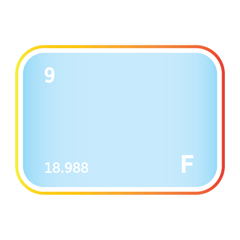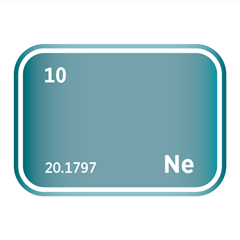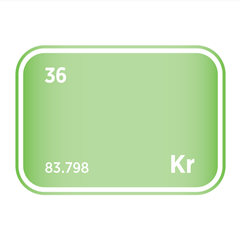Nitrogen
Critical Minerals and The Energy Transition
Navigating the Nitrogen Market
Nitrogen, a colourless, odourless gas that constitutes about 78% of the Earth's atmosphere, is fundamental to many industrial, agricultural, and technological applications, anchoring its position in the global market. Its inert nature makes it invaluable as a protective atmosphere for the production of electronic components, in the preservation of food, and in the manufacture of stainless steel. Moreover, nitrogen is essential in synthesising ammonia, a building block for fertilisers, which underscores its critical role in supporting global agriculture and food production. The production of nitrogen, primarily through the Haber-Bosch process, represents a nexus between industrial capability and environmental considerations, given its energy-intensive nature and the quest for more sustainable practices. The nitrogen market is characterised by its dual challenge of meeting the growing demand for high-quality nitrogen in various sectors while also navigating the imperative for energy efficiency and reduced environmental impact. As industries evolve and the push for green technologies gains momentum, the role of nitrogen is set to expand, encompassing new innovations and applications that align with the principles of sustainability and efficiency.
An introduction to nitrogen
Nitrogen demand and end-uses
Nitrogen is a colourless, odourless, and inert gas that makes up nearly four-fifths of the Earth's atmosphere. Its chemical stability, non-flammability, and ability to create inert environments make nitrogen indispensable across agriculture, chemicals, manufacturing, healthcare, food processing, and advanced technology sectors. While atmospheric nitrogen is abundant, its industrial utility lies in its processed forms, including ammonia, nitrogen gas, and liquid nitrogen, each of which plays a vital role in the global economy.
The most extensive use of nitrogen is ammonia, which is synthesised via the Haber-Bosch process by combining atmospheric nitrogen with hydrogen, typically derived from natural gas. Ammonia is the cornerstone of nitrogen-based fertilisers, including urea, nitrate, and sulphate. These fertilisers are essential to global agriculture, supporting crop growth and food production in intensive and smallholder farming systems. As the global population grows and arable land becomes more intensively farmed, nitrogen fertiliser demand remains high, particularly in Asia, North America, and Latin America.
In the chemical industry, nitrogen is used as a feedstock, a processing gas, and a safety medium. Nitrogen-derived ammonia and nitric acid are used to manufacture explosives, plastics, dyes, pharmaceuticals, and synthetic fibres. Nitrogen gas provides inert atmospheres in chemical reactions, preventing oxidation or unwanted side reactions during sensitive manufacturing steps.
Nitrogen is also crucial in metallurgy and materials processing, particularly in steelmaking and metal heat treatment. In these applications, nitrogen blankets molten metals and protects them from contamination, oxidation, and moisture. It is also used in annealing furnaces, sintering processes, and additive manufacturing (3D printing) to ensure product consistency and structural integrity.
In electronics and semiconductors, ultra-high-purity nitrogen purges equipment, cleans surfaces, and maintains controlled atmospheres to produce microchips, printed circuit boards, and display technologies. As device geometries shrink and cleanliness becomes more critical, nitrogen’s role in ensuring defect-free production grows increasingly important.
In healthcare, nitrogen is used in cryopreservation, medical device manufacturing, and as a propellant in aerosol medications. Liquid nitrogen, in particular, is essential for freezing and storing biological samples such as blood, stem cells, reproductive cells, and vaccines. It is also used in dermatology and cryosurgery to remove skin lesions and warts. Its extreme cold temperature makes it indispensable in laboratories, biotechnology research, and pharmaceutical logistics.
Nitrogen is also extensively used in food and beverage processing. It provides a sterile, inert atmosphere in packaging that extends shelf life by displacing oxygen and slowing spoilage. Liquid nitrogen is used in flash freezing, which helps preserve texture, flavour, and nutritional content. Nitrogen gas is also used in producing carbonated drinks and as a propellant in cream dispensers and food-grade aerosols.
In oil and gas operations, nitrogen is injected into reservoirs to maintain pressure and enhance oil recovery. It is also used in pipeline purging, pressure testing, and inerting to ensure safety and operational efficiency. In power generation and infrastructure maintenance, nitrogen prevents fires and explosions in systems handling flammable gases or liquids.
Looking ahead, nitrogen demand is expected to remain robust in agriculture, food processing, and chemicals, while growing steadily in electronics, healthcare, and advanced materials. The rise of green ammonia, produced using renewable hydrogen rather than natural gas, also creates new momentum for decarbonising nitrogen fertiliser production and integrating nitrogen into sustainable energy systems. Ammonia is being explored as a hydrogen carrier and zero-carbon fuel in shipping and power generation, potentially adding a new layer of strategic value to nitrogen-based compounds.
Nitrogen’s combination of inertness, versatility, and low cost ensures it remains a foundation of industrial civilisation. From feeding billions to enabling next-generation electronics, from cryogenic preservation to zero-carbon fuels, nitrogen supports critical systems at the intersection of chemistry, sustainability, and innovation.
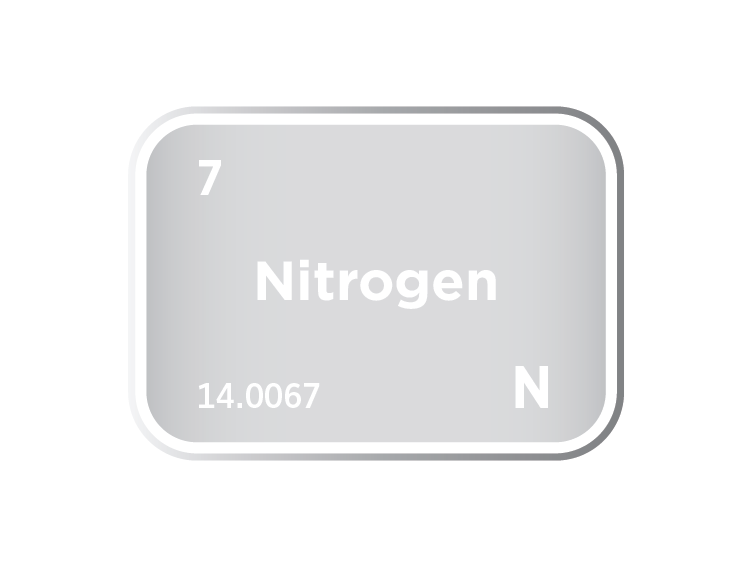
Nitrogen supply
Nitrogen supply is not limited by elemental scarcity but by the energy-intensive processes needed to convert atmospheric nitrogen into usable forms for agriculture and industry. As the most abundant gas in Earth’s atmosphere, comprising ~78% by volume, nitrogen is widely available in gaseous form. However, most biological and industrial systems require it in reactive forms such as ammonia (NH₃), nitrates (NO₃⁻), or urea. These are synthesised through industrial processes, primarily the Haber-Bosch process, which combines nitrogen with hydrogen under high temperature and pressure to produce ammonia. This method remains the backbone of nitrogen fertiliser production worldwide and is closely tied to the availability and price of natural gas, which serves as the main feedstock for hydrogen.
Regions with access to abundant and low-cost gas, such as the United States, Russia, and several Gulf states, are major centres of synthetic nitrogen production. China and India also have substantial domestic capacity, often relying on more carbon-intensive coal-based hydrogen generation. Together with Indonesia, these countries account for most of the world’s nitrogen fertiliser output, often supported by state-backed policies aimed at securing food supply. In parallel, the physical production of nitrogen gas, used in industrial applications, is achieved through cryogenic air separation, where atmospheric air is cooled to isolate nitrogen from other gases. Smaller-scale or on-site production frequently uses pressure swing adsorption or membrane separation, making nitrogen accessible for hospitals, electronics firms, and metallurgical operations.
Nitrogen fertilisers, particularly urea, ammonium nitrate, and ammonium sulphate, are heavily traded commodities. Major exporters such as Russia, Qatar, Egypt, and Saudi Arabia supply large import-dependent markets, including Brazil, India, and sub-Saharan Africa. This reliance on international trade introduces geopolitical risk, as demonstrated by the Russia–Ukraine conflict, where sanctions and logistical disruptions significantly impacted global fertiliser flows, triggering price spikes and food security concerns in vulnerable regions.
Environmental considerations are now reshaping the nitrogen supply landscape. The Haber-Bosch process alone is responsible for an estimated 1-2% of global carbon dioxide emissions, placing pressure on the fertiliser sector to decarbonise. Emerging technologies such as green ammonia, produced using electrolysis-based hydrogen, and turquoise ammonia, derived via methane pyrolysis, are under development as low-emission alternatives. Countries with access to cheap renewable energy, including Australia, Chile, and the United Arab Emirates, are positioning themselves as future exporters of low-carbon ammonia, which could shift global nitrogen geopolitics over the coming decades.
Meanwhile, circular nitrogen strategies such as biological fixation, manure recycling, and cover cropping are being explored to reduce dependence on synthetic fertilisers. While these approaches support sustainability goals, they can be harder to implement consistently at scale, especially in intensive or industrial farming systems. At the same time, ammonia is emerging as a potential hydrogen carrier and zero-carbon marine fuel, introducing new non-agricultural demand that may compete with fertiliser use in the future. Together, these trends point to a nitrogen supply chain undergoing transformation, driven by climate goals, energy dynamics, and the need for geopolitical resilience.
Nitrogen substitution
Nitrogen substitution is inherently limited due to the essential role nitrogen plays in plant growth and industrial processes, but efforts are underway to reduce synthetic nitrogen use and partially replace it with more sustainable or localised alternatives. Unlike metals or industrial materials that can be swapped for functional equivalents, nitrogen is a fundamental building block of proteins, DNA, and chlorophyll, making it biologically irreplaceable in agriculture. However, substitution in the nitrogen supply chain typically refers to reducing reliance on synthetic nitrogen fertilisers, particularly those produced via the energy-intensive Haber-Bosch process, by deploying alternative sources, methods, or technologies that deliver similar agronomic benefits with fewer environmental and geopolitical drawbacks.
In agriculture, the main forms of nitrogen substitution include:
-
Biological nitrogen fixation, where leguminous crops such as soybeans, peas, and alfalfa partner with Rhizobium bacteria to fix atmospheric nitrogen into a usable form. This natural process can significantly reduce or eliminate the need for synthetic fertiliser in rotational or mixed cropping systems. However, its effectiveness depends on soil conditions, crop selection, and management practices, and it is not suitable for all crop types.
-
Organic fertilisers such as manure, compost, digestate from anaerobic digestion, and biosolids provide nitrogen in more complex, slower-releasing forms. While these materials can reduce dependence on synthetic fertilisers and support soil health, they have variable nitrogen content, are less predictable in performance, and may not supply enough nitrogen for high-yield crops without supplementation.
-
Nitrification inhibitors and controlled-release fertilisers are not substitutes per se, but reduce nitrogen losses and improve efficiency, allowing for reduced application rates. These tools help mitigate leaching, volatilisation, and nitrous oxide emissions, effectively lowering the total synthetic nitrogen input required per hectare.
In industrial and chemical processes, where nitrogen gas or ammonia is used, substitution is more challenging but evolving. Some examples include:
-
In cooling and inerting applications, nitrogen gas may be substituted with argon or carbon dioxide, depending on purity, reactivity, and cost requirements. These are context-specific and usually occur where nitrogen is not chemically essential.
-
In ammonia-based energy systems, hydrogen or methanol may be explored as alternative fuels or hydrogen carriers. However, ammonia's energy density and transport characteristics make it uniquely valuable in emerging fuel applications, particularly in maritime shipping and hydrogen storage, limiting true substitution.
-
In explosives and industrial nitration processes, urea-based compounds, ammonium sulphate, or other nitrates may be substituted for traditional ammonium nitrate under specific safety or regulatory regimes. These replacements are driven more by handling risks and regulatory restrictions than by functional limitations.
More broadly, the concept of nitrogen substitution intersects with regenerative agriculture, circular nutrient management, and agroecology, where the goal is not necessarily to replace nitrogen, but to reduce overuse, minimise runoff and emissions, and close nutrient loops through improved system design.
Technological substitution is also emerging, such as biofertilisers and synthetic biology approaches that engineer microbes to fix nitrogen in non-legume crops like wheat or maize. While promising, these are still in early stages and face technical, regulatory, and scalability challenges.
Ultimately, nitrogen cannot be fully substituted in any system that requires plant growth or protein synthesis, but the methods of sourcing, delivering, and recycling nitrogen are evolving rapidly in response to climate targets, input costs, environmental regulation, and geopolitical fertiliser insecurity. The future of nitrogen substitution lies not in replacing the element itself, but in rethinking how it is sourced and applied, balancing productivity with sustainability.



Meet the Critical Minerals team
Trusted advice from a dedicated team of experts.

Henk de Hoop
Chief Executive Officer

Beresford Clarke
Managing Director: Technical & Research

Jamie Underwood
Principal Consultant

Ismet Soyocak
ESG & Critical Minerals Lead

Rj Coetzee
Senior Market Analyst: Battery Materials and Technologies
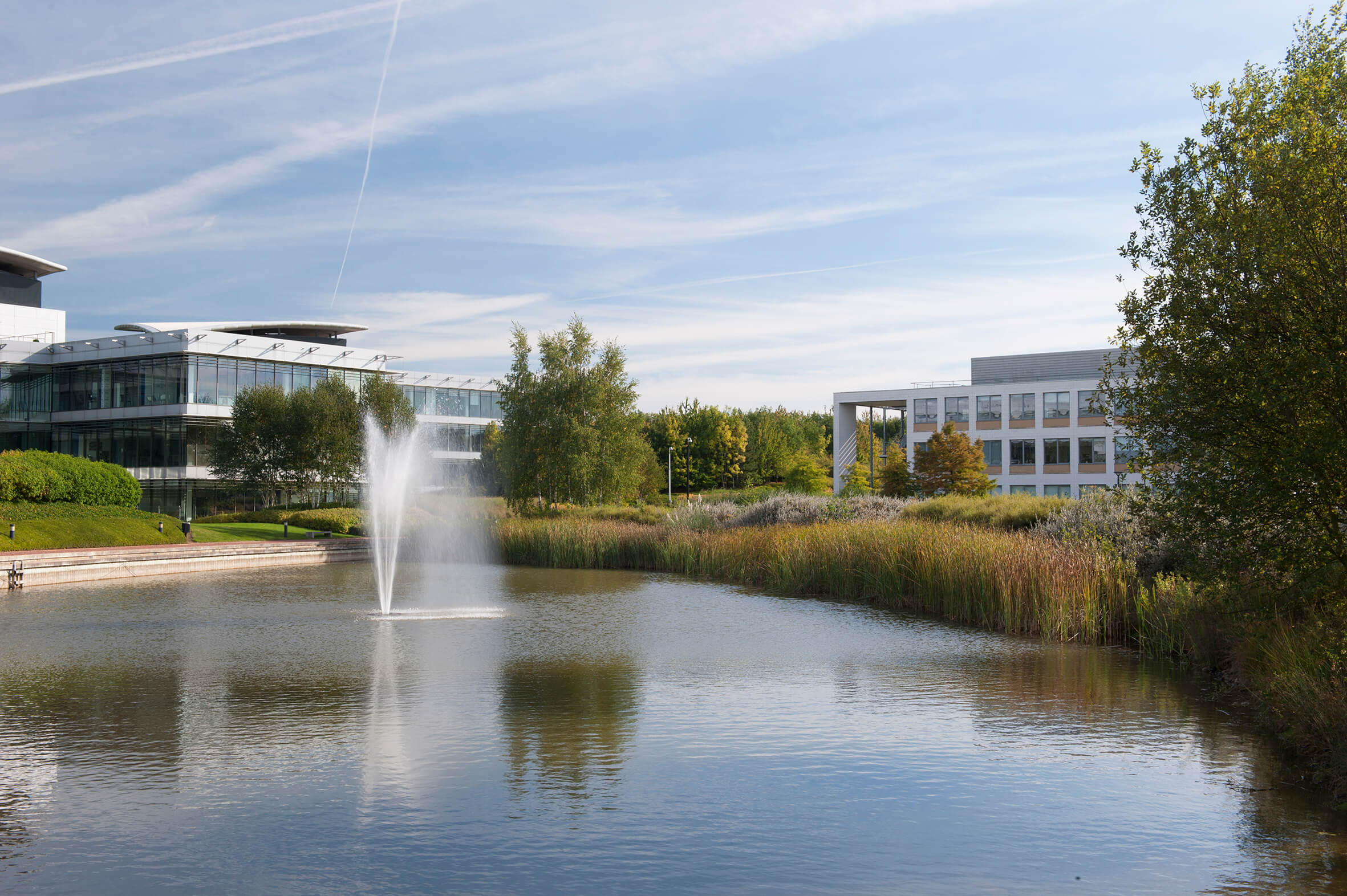
How can we help you?
SFA (Oxford) provides bespoke, independent intelligence on the strategic metal markets, specifically tailored to your needs. To find out more about what we can offer you, please contact us.




